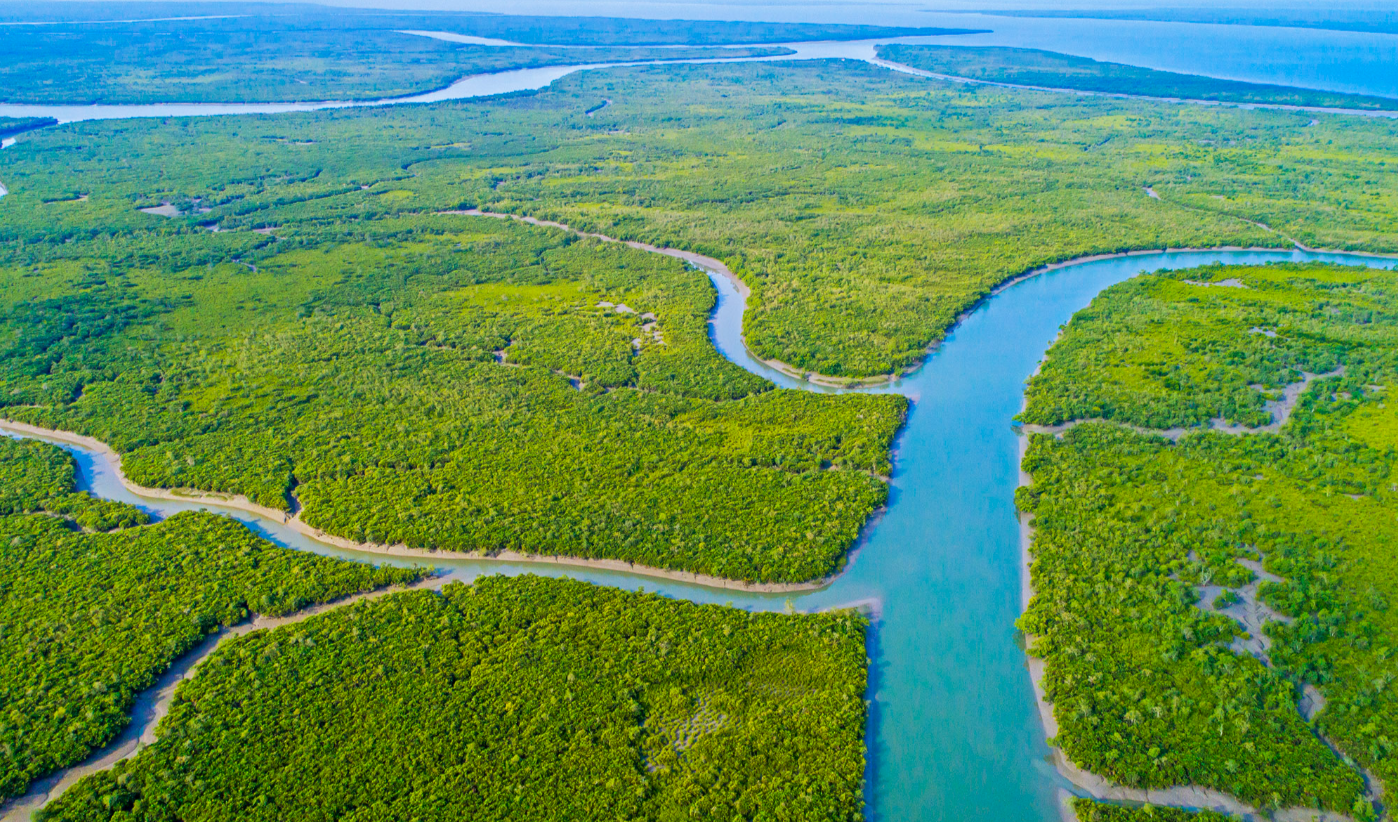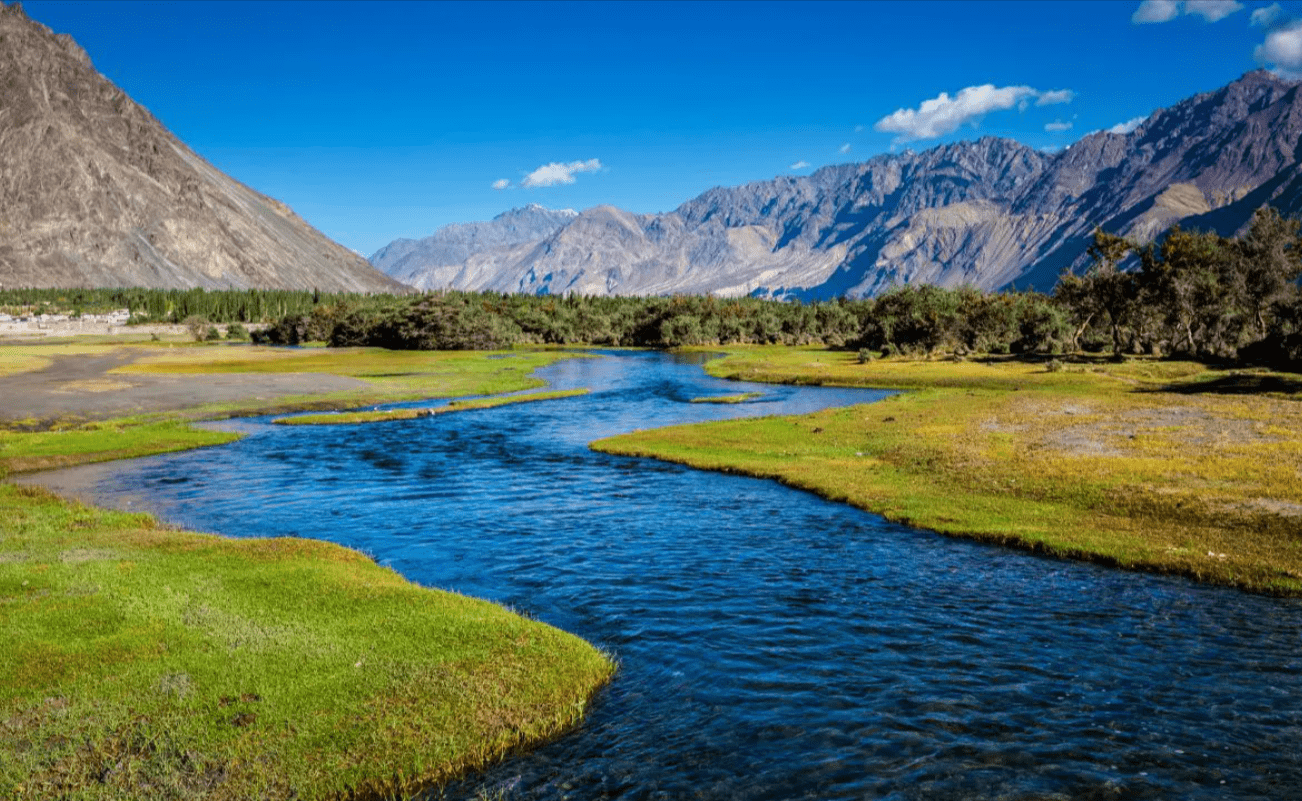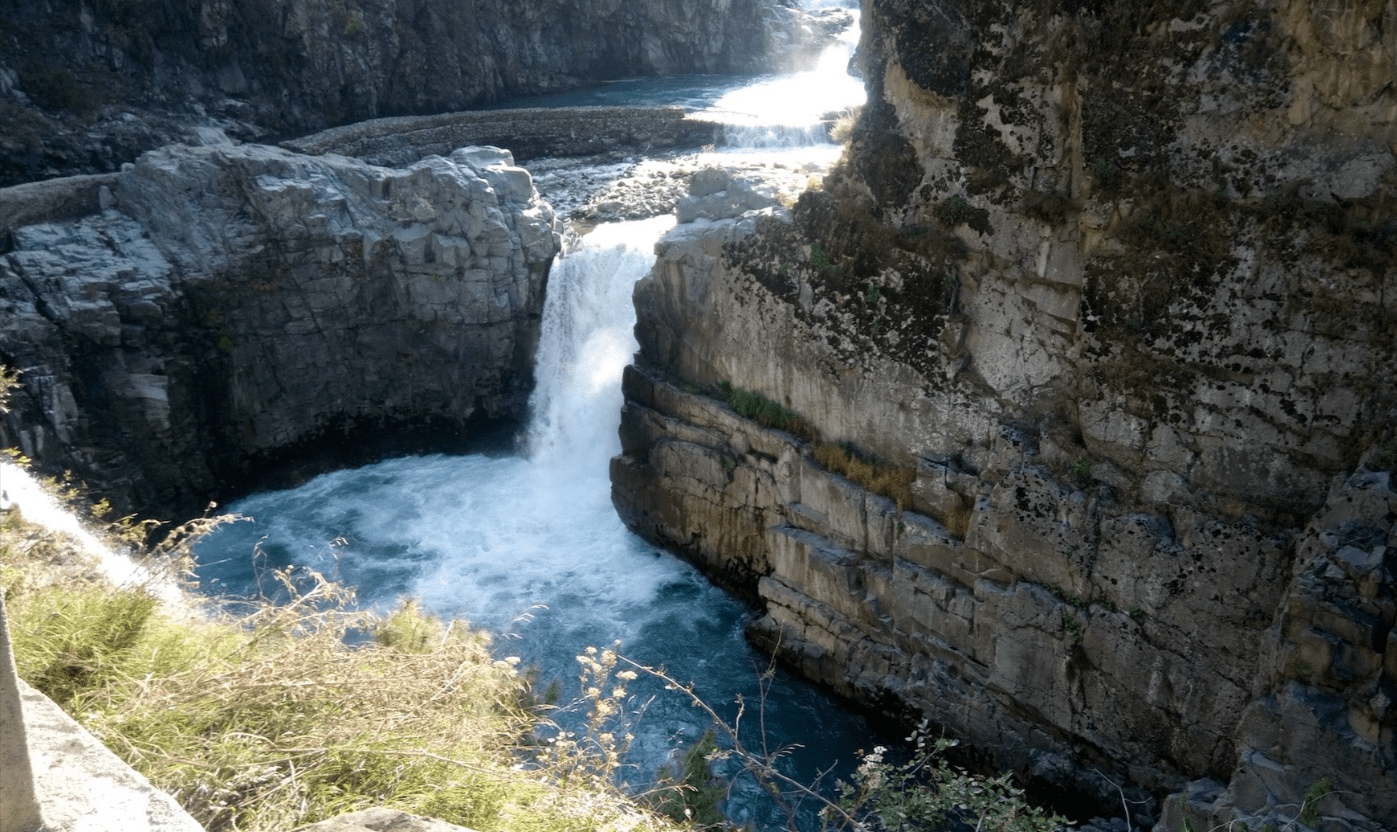Sundarbans had long been on our travel list, and though it had eluded us for various reasons, we finally carved out a couple of days this year for a visit. The trip turned out to be a truly unforgettable experience!
Our adventure began at Science City, where we boarded a bus. After a three-hour journey, we arrived at Godkhali, near Goasaba. From there, we took a boat ride, transferred to a van, and then boarded another boat to reach Satjelia, our overnight stop.
Satjelia, which translates to “the village of seven fishermen,” is a charming island village. Our homestay was situated amidst this picturesque setting, with the local people proving to be incredibly welcoming and helpful.
After a delightful lunch, we took a stroll around the village for about an hour before heading to the jetty for another boat ride.
Boat Ride in Sundarbans
The boat ride through the creeks and mangroves was truly special. The small boat navigated through the vast water bodies close to the dense mangrove forests, creating a surreal experience. The silence, broken only by the gentle splash of the oars, added to the eerie atmosphere of the dense forests.
We observed cranes standing still on the muddy riverbanks, and we eagerly scanned the mangroves for glimpses of elusive wildlife. As the tide receded, our boat moved from the creeks to the main river. According to our boatman, the Sundarbans is famous for its tigers and tidal patterns. After watching the sunset from the boat, we returned to the eco-village.
The eco-village hosted a musical evening with local performers, which was a highlight. The blend of traditional harmonium and drum with guitar strums created a magical atmosphere. Local liquor “Hariya” added to the charm of the evening.
The following morning, we embarked on a trawler boat named “Para Siempre,” setting off on our journey through the wilderness. The foggy morning made visibility poor, and the chilly wind added to the adventure. As we sailed through the rivers and rivulets, the dense forests created an eerie feeling, as if we were being watched by hidden creatures.
The Sundarbans, named after the “Sundari trees” that help stabilize the soil, was a unique experience. From the Gomdi River, we navigated through various creeks to the confluence of Gomdi, Bidya, and Matla Rivers.
The region is teeming with birdlife, including kingfishers, egrets, Brahmani eagles, and many more. We were fortunate to spot deer, crocodiles, rare water monitor lizards, wild boars, and wild cats. Witnessing these animals in their natural habitat was far more thrilling than seeing them in a zoo.
By noon, we reached Dobanki Watch Tower, featuring a canopy walk 20 feet above the ground. It felt like a reversal of a zoo, where humans were enclosed while the animals roamed free.
By 3 PM, we arrived at Sudhanyakhali Watch Tower, where we saw a deer with her fawn drinking from a pond. The sight was captivating and marked a fitting end to our exploration.
Our journey through the Sundarbans, India’s largest mangrove forest, concluded. We bid farewell to the jungle and our new friends, returning to Godkhali where buses awaited to take us back to Kolkata.
Conclusion
The Sundarbans offered a unique blend of thrill, adventure, and relaxation. Although we didn’t encounter the legendary tiger, spending two days exploring the villages and waterways was a memorable experience.


